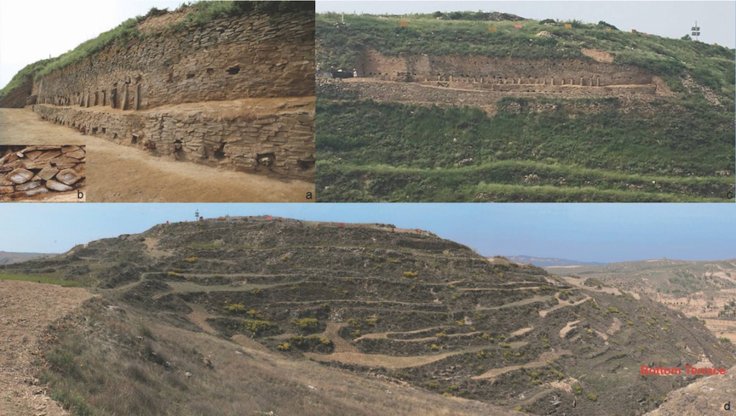
When it comes to the excavation related to pyramids, most of the times people think about the mysterious land of pharaohs, Egypt. But this time archaeologists have found thousands of years old historical city, including a massive step pyramid in China.
In the month of August, archaeologists published their findings in the journal called Antiquity, where they stated that the research team has discovered a 4,300-year-old city, including a huge pyramid that is at least 230 feet high and 24 acres at its base.
The article was written by Li Jaang, a professor at the School of History at Zhengzhou University, Zhouyong Sun and Jing Shao, archaeologists at the Shaanxi Provincial Institute of Archaeology and Min Li, who is an anthropology professor at University of California, Los Angeles (UCLA).
The study stated that the newly excavated pyramid was decorated with eye symbols and "anthropomorphic." The archaeologists wrote that those figures may have endowed the stepped pyramid with a special "religious power and further strengthened the general visual impression on its large audience."
The researchers believe that for five years the city, which is now called as "Shimao," was flourished around the pyramid and there was a time when the city was spread across an area of 988 acres that made it one of the largest in the world.
After the finding, the archaeologists came to know that the pyramid contains 11 steps, each of which was lined with stone. As told by the researchers, one of the topmost steps they found "extensive palaces that were built of rammed earth, with wooden pillars and roofing tiles, a gigantic water reservoir, and domestic remains related to daily life."
"Evidence so far suggests that the stepped pyramid complex functioned not only as a residential space for ruling Shimao elites but also as a space for artisanal or industrial craft production," archaeologists said while adding that they have found evidence of ancient art and craft production in nearby places.
The city and the pyramid were surrounded by a series of stone walls with ramparts and gates. The study stated that at the entrance of the pyramid there were sophisticated bulwarks or some kind of defensive walls but the design of these walls suggested that along with the defensive side the gates also used to indicate a highly restricted access.
Apart from such findings, the archaeologists have also discovered human heads at Shimao, which suggested that human sacrifice was extremely popular at that time. The researchers said, "In the outer gateway of the eastern gate on the outer rampart alone, six pits containing decapitated human heads have been found."
But the archaeologists believe some of those human remains belonged to the victims from other archaeological site called Zhukaigou, which is located to the north of Shimao and the study said this could "further suggest that they were taken to Shimao as captives during the expansion of the Shimao polity."
In addition to that, the archaeologists stated that the jade artefacts "and human sacrifice may have imbued the very walls of Shimao with ritual and religious potency."
Even though the city is currently called as Shimao, the researchers could not find any kind of evidence that would reveal the ancient name of that place. However, earlier they thought that Shimao was the part of the Great Wall of China, which was built between 2,700 and 400 years ago but, the further excavation in past few years have clarified that ancient structures and city is far older than the Great Wall.









